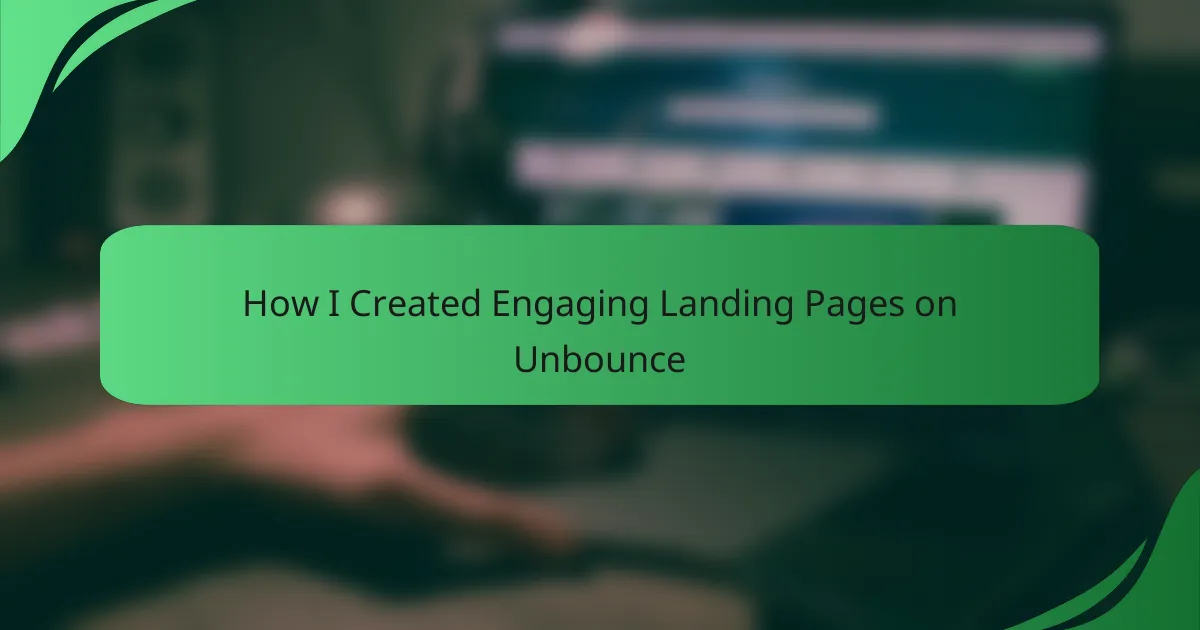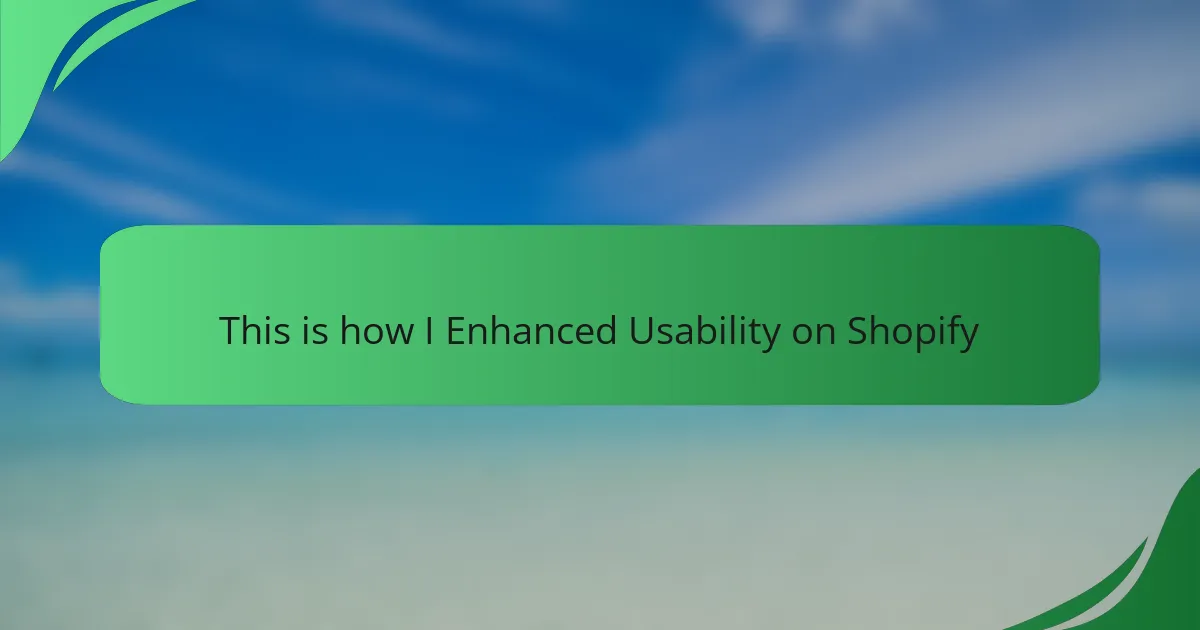Key takeaways
- Effective interface interaction design emphasizes clarity, consistency, feedback, accessibility, and visual hierarchy to enhance user engagement.
- Landing pages are vital for capturing user attention and driving actions; a strong design can significantly increase conversions and foster emotional connections.
- Using techniques like clear language, storytelling, and engaging visuals can lead to higher user retention and a more inviting experience.
- Measuring landing page effectiveness through metrics like conversion rates and A/B testing helps refine designs and improve user interaction.
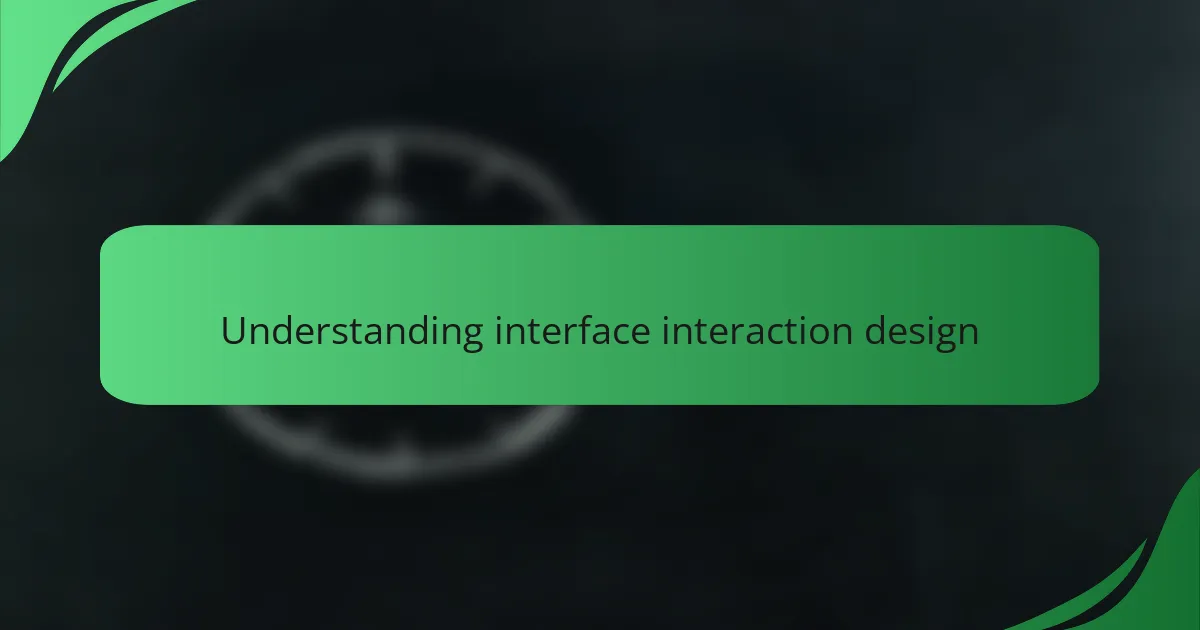
Understanding Interface Interaction Design
When I first delved into interface interaction design, I quickly realized how crucial user engagement was. It’s not just about making something look good; it’s about fostering a connection. I remember creating my first landing page and feeling a sense of pride as I watched users interact with it, realizing that every design choice I made influenced their experience.
Understanding how users interact with elements on a page can dramatically affect the success of your designs. The following principles have helped me tremendously:
- Clarity: Use straightforward language and visuals to convey messages quickly.
- Consistency: Maintain a uniform look and feel to help users navigate effortlessly.
- Feedback: Ensure every action taken on the page provides immediate feedback to users.
- Accessibility: Design inclusively so that everyone can engage, regardless of ability.
- Visual Hierarchy: Prioritize information visually to guide users’ attention strategically.
By focusing on these elements, I found that my pages not only looked appealing but also functioned intuitively, leading to higher engagement and satisfaction.
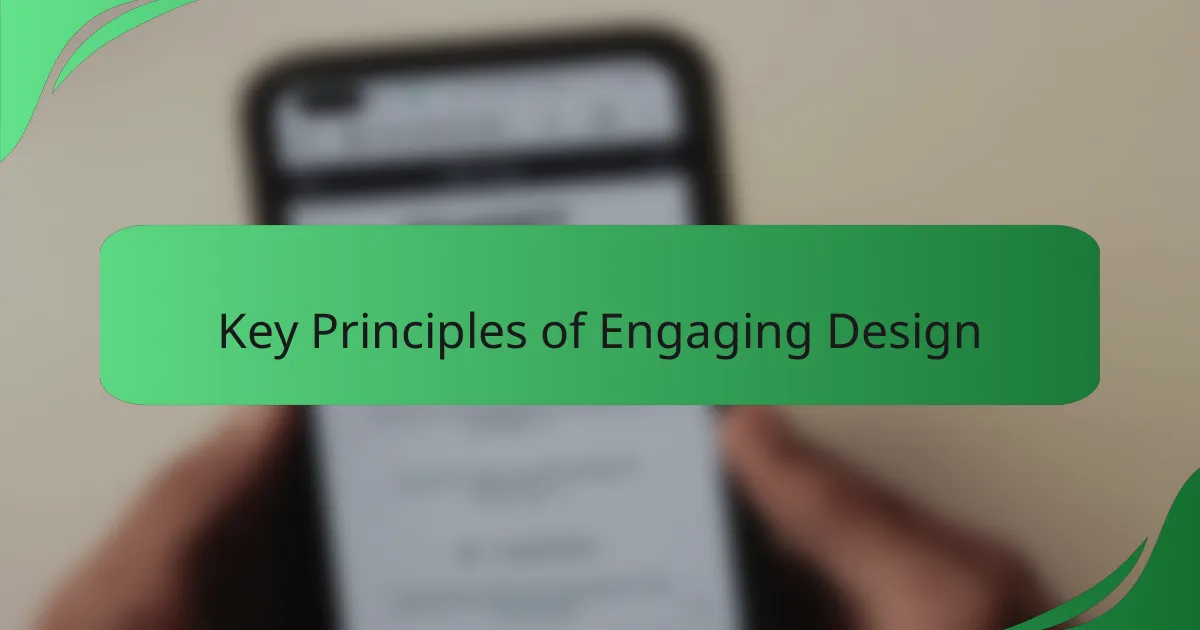
Key Principles of Engaging Design
Engaging design starts with clarity. I remember crafting headlines for my landing pages, ensuring each word was precise and purposeful. It made me realize that when users can grasp your message at a glance, they’re more likely to stay and explore further. Have you ever felt overwhelmed by complicated jargon? I certainly have, and I strive to create a space where users feel informed, not confused.
Consistency is another principle that cannot be overlooked. When I standardized my color palette and typography across all elements, I noticed users navigating my landing pages with ease. It’s like walking through a well-marked trail; everything feels intuitive and familiar. Do you think users prefer to feel lost or at home when interacting with a design? For me, the answer is clear—familiarity can make all the difference in enhancing user interaction.
Lastly, feedback is essential. The moment I integrated subtle animations to indicate successful actions, such as form submissions, was a game changer. I can still recall the satisfaction I felt when users reacted positively to these cues. It’s incredible how a simple visual response can reinforce their actions and encourage them to continue engaging. Can you remember a time when feedback made your experience seamless? I know I can, and that’s what guides how I design.
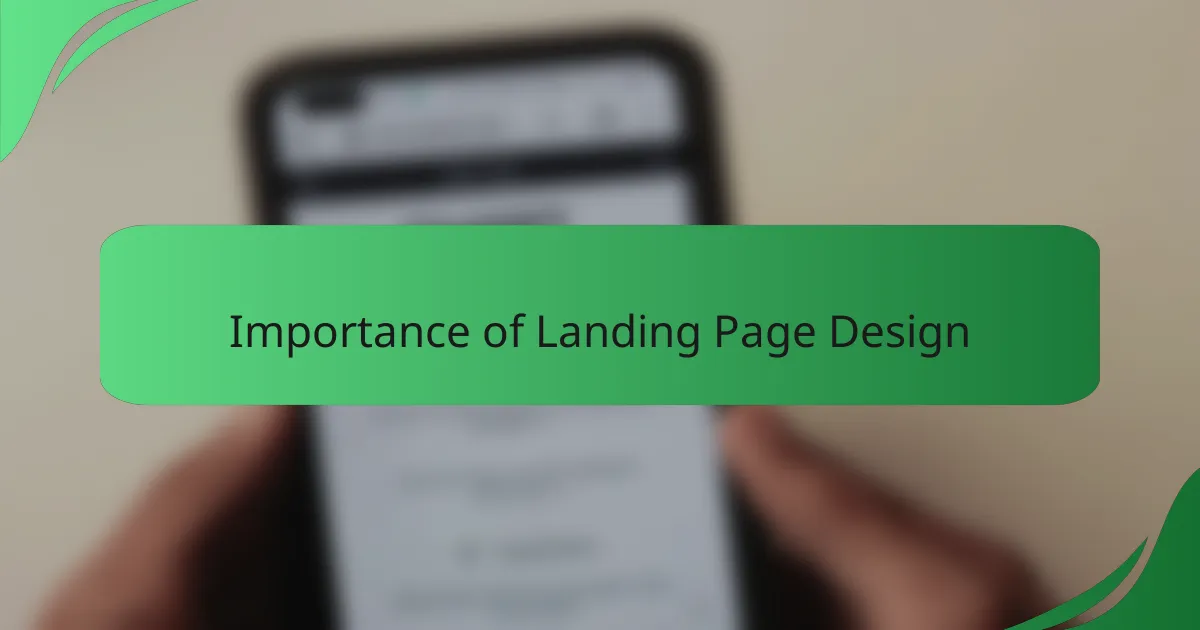
Importance of Landing Page Design
Landing page design plays a critical role in capturing visitor attention and guiding them toward a desired action, whether it’s signing up, purchasing, or simply learning more. I’ve found that an engaging landing page can make all the difference, as it creates an immediate connection with the audience, laying the groundwork for their experience. For instance, when I revamped my landing page, I noticed a significant boost in conversions, almost as if the design itself had developed a personality that resonated with visitors.
Effective landing pages prioritize clarity and visual appeal, ensuring crucial information is easily digestible. I recall a time when I experimented with different color schemes and layouts; a simple change in design brought back positive feedback from users. It turned out that even small details, like font choice and image selection, can evoke emotions and influence decisions.
Here’s a comparison table highlighting some key elements of landing page design:
| Element | Impact |
|---|---|
| Visual Hierarchy | Guides user attention and prioritizes key information. |
| Call-to-Action (CTA) | Drives user engagement and prompts the desired action. |
| Content Clarity | Enhances user understanding and retention of information. |
| Loading Speed | Affects user experience and can greatly influence conversion rates. |
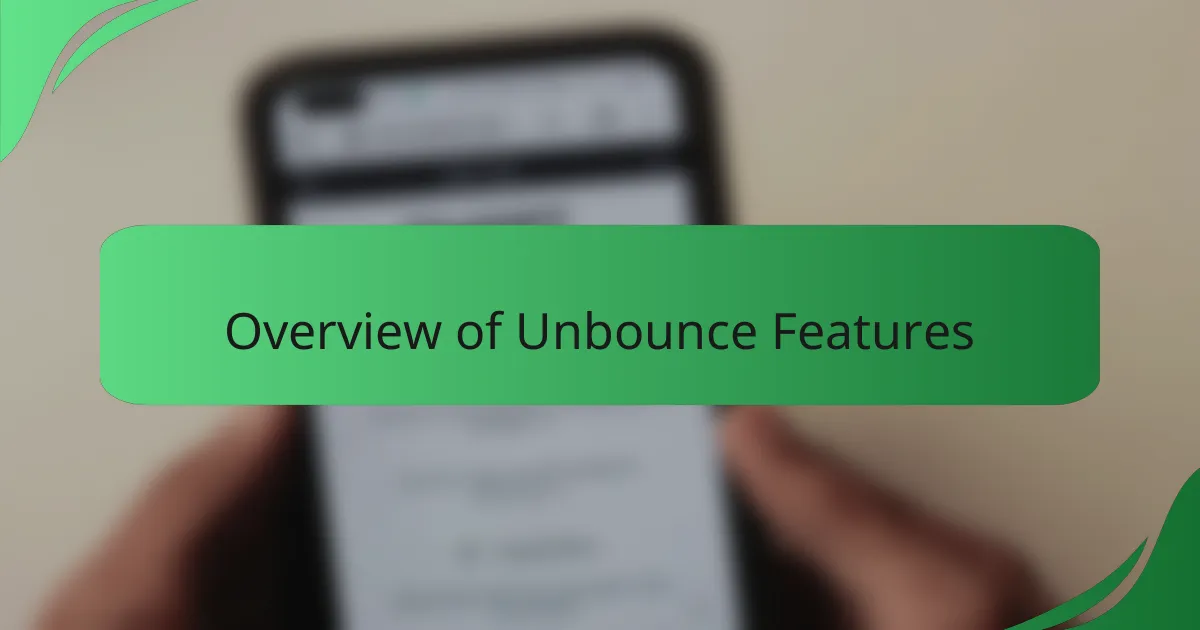
Overview of Unbounce Features
Unbounce is an impressive platform that enables marketers and designers like me to create highly effective landing pages without the need for extensive coding knowledge. One of my favorite features is the drag-and-drop builder, which makes the design process feel intuitive and creative. I remember the first time I used it; I felt empowered as I could visualize my ideas coming to life right before my eyes.
Another standout feature is the A/B testing functionality. It wasn’t just about creating a landing page but about optimizing it based on real user data. When I first tested two different versions of a page, seeing the analytics helped me understand what resonated more with my audience, giving me a real sense of accomplishment when I saw the conversion rates climb.
The integration capabilities with various tools and services are also noteworthy. They allow seamless connections that streamlined my workflow, making it easy to gather leads and follow up effectively. This feature played a significant role in how I managed my campaigns and ultimately contributed to their success.
| Feature | Description |
|---|---|
| Drag-and-Drop Builder | Intuitive interface to design landing pages easily. |
| A/B Testing | Compare different versions of a page to determine which performs better. |
| Integrations | Connect with various marketing tools for streamlined processes. |

My Approach to Creating Landing Pages
My approach to creating landing pages on Unbounce has always been shaped by the desire to create meaningful interactions. I begin each project by deeply understanding the target audience. For instance, I once designed a landing page for a non-profit organization, and by putting myself in their supporters’ shoes, I could see what would resonate with them emotionally.
Next, I focus on clarity and simplicity. When I crafted my first landing page, I wanted to include everything I felt was important. After some reflection and testing, I realized that less truly is more. Stripping away unnecessary elements helped to create a direct and engaging experience.
Finally, I pay close attention to the call-to-action (CTA). I’ve found that the CTAs need to be compelling and crystal clear. In one instance, rephrasing a CTA from “Submit” to “Join Our Movement” resulted in a significant boost in conversion rates.
| Aspect | Details |
|---|---|
| Understanding Audience | Prioritize emotional connections and insights |
| Simplicity | Focus on essential elements for clarity |
| Compelling CTAs | Use strong, action-oriented language |
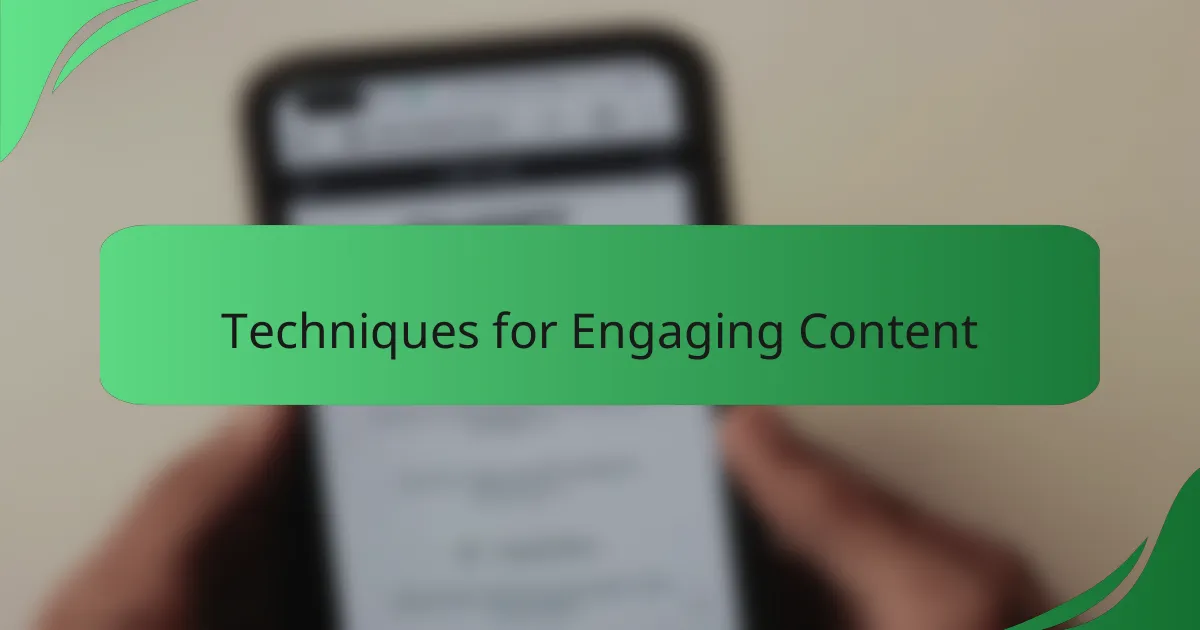
Techniques for Engaging Content
When I focus on creating engaging content for landing pages, I find that clarity is key. I once crafted a page with a complex jabber of information, only to realize the message got lost. Simplifying my language and directly addressing the visitor’s needs transformed the page into a captivating experience. I learned that using clear, concise language not only helps convey the message better but also evokes an emotional response from the audience, fostering a connection.
Incorporating eye-catching visuals has also been vital. When I added a relatable image or a vibrant graphic, I noticed a significant drop in bounce rates. It turns out that people respond to visuals; they make the content feel less intimidating and more approachable. This small change created an inviting atmosphere that encouraged visitors to explore further.
Here are some techniques that have worked well for me:
- Use clear, jargon-free language to enhance understanding.
- Implement storytelling to create an emotional connection.
- Add high-quality images or graphics that resonate with your message.
- Use concise bullet points to highlight key benefits.
- Incorporate testimonials or user-generated content to build trust.
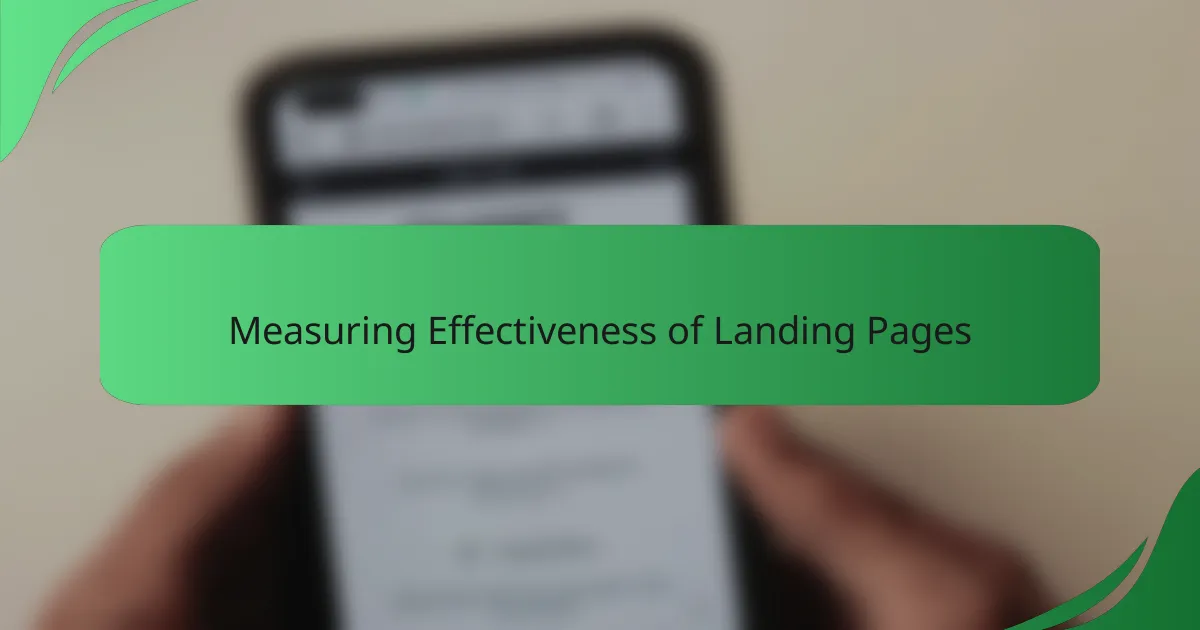
Measuring Effectiveness of Landing Pages
When it comes to measuring the effectiveness of landing pages, I find analytics to be essential. I often dive into metrics like conversion rates and bounce rates, which give insight into user engagement. Personally, tracking these metrics has revealed surprising patterns in user behavior, helping me refine my approach for better results.
Another effective method I use is A/B testing. By comparing two variations of a landing page, I get to see firsthand what resonates more with visitors. This iterative process not only sharpens my design skills but also keeps me engaged in the creative aspect of the project.
Here’s a handy comparison of key metrics to consider when measuring landing page effectiveness:
| Metric | Description |
|---|---|
| Conversion Rate | The percentage of visitors who complete the desired action. |
| Bounce Rate | The percentage of visitors who leave after viewing only one page. |
| Time on Page | How long users spend on the landing page, indicating engagement level. |
| A/B Testing | Comparing two versions to see which performs better. |
